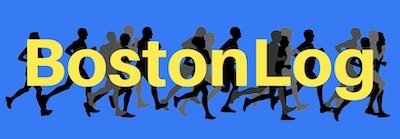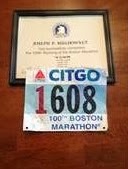On April 15, 1996, the world’s oldest marathon was about to become the world’s largest marathon.
But it wasn’t going to be easy.
The northeastern United States had experienced its snowiest winter on record, and simply because the calendar read “April” meant little to Mother Nature, who pursued her relentless polar assault into the middle of the month.
On April 10th, fifteen inches of snow fell on Hopkinton. Heavy rains continued for the remainder of the week, turning the grounds around the Hopkinton Middle School into a soupy quagmire.
Ever resourceful, the Boston Athletic Association, in preparation for the largest marathon field in history gathering to celebrate the 100th running of the Boston Marathon, summoned National Guard helicopters to hover near the ground, sucking up moisture from the saturated earth.
Miraculously, the marine-like weather lifted, and race day dawned, greeting runners with clear and crisp conditions.
An official field of 38,708, the largest field ever assembled for a marathon, made the pilgrimage to Hopkinton that morning. Unofficial runners, or “bandits” as they have been labeled, swelled the ranks to over 40,000 participants.
Buses shuttling the army of runners from downtown Boston experienced major traffic jams, and many runners suffered acute anxiety, living every runner’s worst nightmare of not arriving at the starting line until after the gun sounds.
Remarkably, the buses did arrive, turning the Athletes’ Village into a mini-Woodstock, complete with colorful, disposable clothing and plenty of mud.
The record number of participants stretched for more than a half mile along Hopkinton’s Main Street, and at the stroke of noon, when the cannon blasted, signaling the start of the race, it took a half hour for the last runner to touch the starting line.
Conditions were perfect for runners as well as spectators. The temperature hovered around 55 degrees, and the crowds, perhaps realizing the historic significance of this race, were larger and louder than ever. Spectators clustered in the towns of Ashland, Framingham, and Natick. The coeds at Wellesley cheered so loudly, it reminded one of the Beatles’ early American concerts. The Newton Hills seemed less steep due to the encouragement of the crowd, and from the 22-mile mark, all along Commonwealth Avenue, the course narrowed as spectators, eager to encourage their running heroes, packed the streets. From Fenway Park’s Citgo sign to the finish, there seemed to be a continuous clap and a constant roar. As always, the spectators, who, in my opinion, make this the world’s greatest running event, truly turned the 100th running of the Boston Marathon into an historic event.
My running mates, John Ausherman, Tim Sponseller, both from Chambersburg, in southern Pennsylvania, and I from the coal region of northeastern Pennsylvania, competed as a team for the Cumberland Valley Athletic Club, in the Master’s Division.
Buoyed by the crowd, and the near ideal weather, I clocked a time of 2:34:58, placing 179th, 22nd in the Master’s category, part of the largest field in the 100-year history of the Boston Marathon. John Ausherman ran a time of 2:41:53; while Tim Sponseller crossed the finish line in 2:44:49. We earned a 4th place finish in a field of 204 Master’s teams.
The 100th running of the Boston Marathon is woven in the fabric of my marathon history. The organizers, the spectators, and the 38,708 official runners, from 84 countries, 35,868 of whom finished the race, combined to make the 1996 Boston Marathon a truly historic race.
Joe Muldowney
Pottsville, Pennsylvania
April 15, 1996
Bib # 1608
2:34:58

